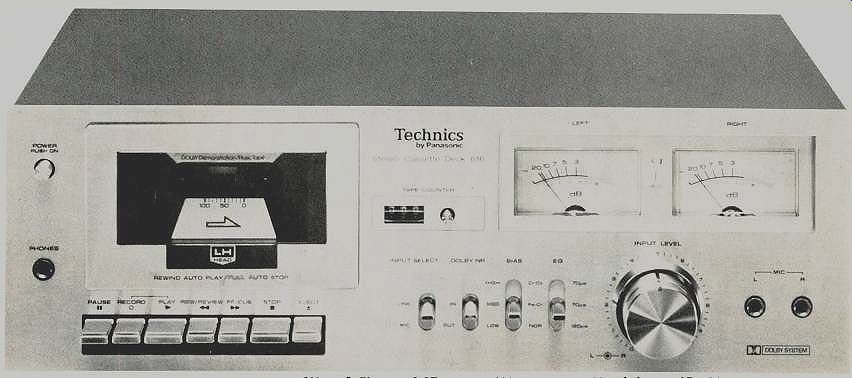
MANUFACTURER'S SPECIFICATIONS:
Frequency Response: Normal, 30-14,000 Hz; FeCr and CrO2, 30-15,000 Hz.
Wow & Flutter: 0.07 percent W rms.
S/N Ratio: 66 dB with Dolby.
Inputs: Mike, 0.25 mV; Line, 60 mV.
Output: 0.42 mV at 22 kilohms.
Headphone: 65 mV.
Motor: D.C., electronically controlled.
Bias Frequency: 90 kHz.
Price: $200.00.
In spite of the decline of the American dollar on the world market and higher production costs in the Far East, the prices of audio components haven't risen very much at present.
How long this situation will continue is anybody's guess, but it would seem that prices will have to show a sharp increase in the next year. At the moment, such items as direct-drive, turntables and cassette decks--especially those in the "budget" range--are available at remarkably low prices.
An example of this is the Technics RS-616 cassette deck which offers good all-round performance with specifications comparable to those decks costing a lot more. It is a front-loading deck, and the styling is similar to the more expensive Technics' models with the usual satin-finished aluminum panel and polished instrument-type controls to match. The metal cover is finished in matte black, and the deck looks more expensive than its modest price would suggest. Among its features are a Dolby N/R system, fully automatic stop, and switches for changes in bias and equalization.
The vertical cassette compartment is on the left, and I was pleased to note that the door opens slowly ... it doesn't throw the cassette out. Underneath are six tape-transport keys, plus one for Eject. To their right is a Mike-Line input switch followed by a Dolby switch. Then come the two three-position lever switches for bias and equalization, plus a large dual-concentric input control. Two standard quarter-inch mike jacks are at the extreme right, and a digital counter is at the far left. The On-Off switch is to the left of the cassette compartment with the headphone jack underneath it.
The motor is a d.c. type fed from a stabilized supply--but not servo controlled. Inside, all components are mounted on a single large circuit board with access from underneath. The case is constructed of strong, black-plastic moulding, and the overall dimensions measure 17 in. (43.2 cm) x 10 5/8 in. (27 cm) x 55/8 in. (14.3 cm).
Measurements
Figure 1 shows the frequency response from a standard test tape, while Fig. 2 shows the record-replay response with the Maxell UDXL-1 tape, with the Normal setting on the bias switch and equalization set to 120 uS. The-3 dB point was at 14.3 kHz, and the low end was well maintained down to 30 Hz. Next the Bias switch was changed to CrO2 and the equalization was set to the TDK SA tape, which is a chrome-substitute formulation. As shown in Fig. 3, the frequency response was fairly similar to the Maxell UDXL-1 tape. Finally a Sony C-46 FeCr cassette, which came with the deck, was tested after the Bias was changed to FeCr, and the results are shown in Fig. 4. The high frequency response ex tended to 15.3 kHz, with a slight reduction in high frequency saturation at 0 Zero, VU. The three tapes were then tested for distortion at 1 kHz (see Fig. 5) and then distortion vs. frequency (see Fig. 6). The latter was measured at 0 VU (1 kHz) Signal to noise measured 60 dB ("A" weighting, 3 percent THD reference) for the Maxell UDXL-1 and Sony FeCr, while the TDK SA clocked in at 61.0 dB. Switching in the Dolby N/R increased the figures for the UDXL-1 and SA to 69 dB, and 68 dB for the FeCr. The Dolby tracking was within 1.5 dB down to-40 dB. The input signal for 0 zero VU was 70 mV line and 0.26 mV for mike, and when the latter was switched in the S/N ratio decreased by some 9 dB. Output varied between 400 and 440 mV depending upon the tape used. Erase efficiency was better than 70 dB.
Wow & flutter measured 0.06 percent (DIN 45-507) and tape speed was less than 0.03 percent slow. Rewind time for a C-90 cassette was 95 seconds.
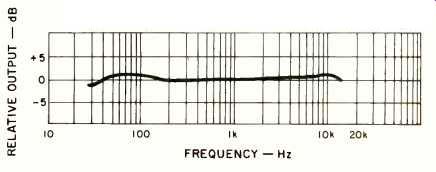
Fig. 1-Playback response with a standard test tape.

Fig. 2-Record/replay response with Maxell UDXL-1 tape.
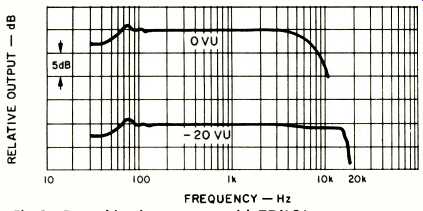
Fig. 3-Record/replay response with TDK SA tape.
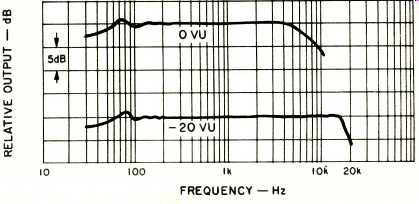
Fig. 4-Record/replay response with C-46 Sony FeCr tape.
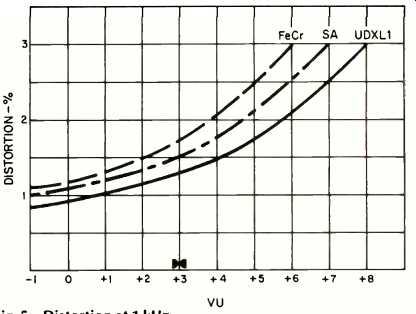
Fig. 5-Distortion at 1 kHz.
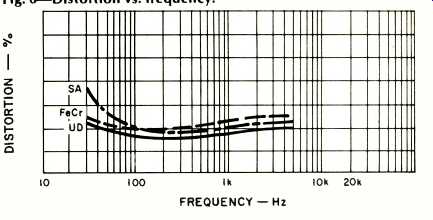
Fig. 6-Distortion vs. frequency.
Listening & Use Tests
As you might expect, the low price means that somecom promises are inevitable, but they are surprisingly few … there is no output control, peak indicator, or memory switch, and you cannot switch from Fast Forward to Playback modes without pressing the Stop button first.
However, in terms of frequency response, distortion, and S/N ratio, the RS-616 compares quite favorably with decks costing a lot more ... in fact the noise level is lower than most. I found the transport control keys a little too close for comfort, but other than that I have no criticisms to make. As I mentioned before, this cassette deck is really an excellent value for the money, and with the present currency crises, there is a chance that this low price will show a substantial increase in the very near future.
--George W. Tillett
=================
(Source: Audio magazine, Feb 1979)
Also see:
Technics Model RS-M85 Stereo Cassette Deck (Jun. 1979)
Sanyo Model RD5350 Stereo Cassette Deck (Feb. 1979)
Technics Model RS-1500US Stereo Open-Reel Tape Recorder (May 1977)
= = = =